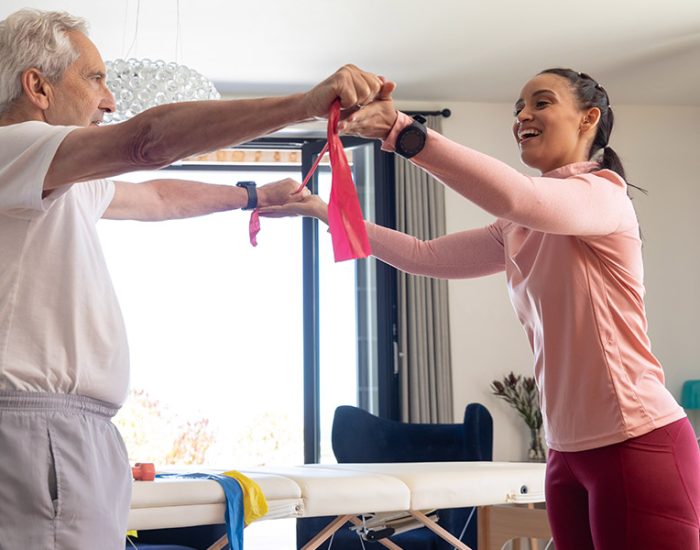Designing a Diaper-Friendly Closet: How to Store and Access Lifree Adult Diapers Easily
When adult diapers become a daily part of life — for yourself, a parent, or someone you care for — you start noticing how quickly the clutter adds up. Diapers here, wipes there, clothes somewhere else. And when you’re in a rush, that chaos becomes a problem.
We understand how it feel going through it. At first, there was no dedicated space for diapers, wherever we found space — on a stool, on top of the dresser, sometimes even balanced awkwardly in the bathroom. It wasn’t working.
Eventually, we realized we didn’t need more space. We just needed a better setup. One that worked smoothly when things got busy, when accidents happened, or when we were tired and needed to act fast.
Here’s what helped — nothing complicated, nothing expensive. Just practical choices that made life a bit easier.
Start with One Dedicated Spot
Clear out the bottom shelf of a closet. That’s it. Nothing fancy — just enough space to keep things within reach. Especially if the person using the diaper has mobility issues, the last thing you want is to stretch or bend.
The bottom shelf works because it is eye-level when sitting, easy to pull things from, and didn’t require opening drawers or lifting anything.
Ditch the Plastic Packaging
Those packs that diapers come in? Useless once they’re half-empty. They sag, slide off shelves, and look messy. Start using open storage bins instead — one for daytime diapers, another for nighttime ones. No lids. No zippers. Just quick grab-and-go access.
Label them! I know it sounds basic, but in the middle of the night, you don’t want to guess which one’s which. A strip of masking tape with “DAY” and “NIGHT” written in marker did the job.
Add a Diaper Station Caddy
Next to the bins, we kept a plastic caddy filled with essentials — wipes, disposal bags, powder, gloves, sanitizer, and barrier cream. Having everything in one place meant we weren’t running around looking for stuff.
When it’s time to change, we just pull the caddy out. Simple.
Keep Spare Clothes Nearby
This is a big one. We rolled up a few soft pyjamas, T-shirts, and undergarments and kept them right next to the diapers. Accidents happen, and digging through drawers when someone’s uncomfortable isn’t fun.
Just roll and stack a few easy-change outfits. That way, you’re always ready.
Build a “Go Bag” for Outings
Make a small emergency pouch: one diaper, a small wipe pack, plastic bag, and a towel — all zipped up and stored in the closet. Grab it when you head out for a hospital visit or long trip. This will help you so well you will realise things are becoming easy. It’s like an insurance policy for caregivers.
Always Keep a Backup Pack
Imagine running out of diapers at night. Never again. Now, you shall keep one full, unopened pack hidden behind the open ones. It’s just a backup, but it gives peace of mind.
Tackle the Smell Gently
Even fresh diapers have a scent. We dropped a lavender sachet in the corner of the shelf. Just use a small open bowl of baking soda. Works well, especially if the person you’re caring for is sensitive to fragrances.
Add Light Where You Need It
Those stick-on motion sensor lights are super handy. Put one inside the closet — so during late-night changes, you don’t have to wake everyone up by switching on the main lights.
Do a Quick Weekly Check
Every weekend, take five minutes to wipe down the shelf, restock supplies, and toss anything old. Sometimes we run low on wipes without realizing it — this quick check solves that before it becomes a problem.
Don’t Worry About Getting It Perfect
Your first version of this setup won’t be that great. You’ll realize the bins are sometimes too deep, the clothes are stored in another room, or the caddy isn’t organized. But slowly, with small tweaks, you will find what works for your routine—especially when managing diapers for elderly care. An efficient setup ensures ease and comfort in daily routines.
That’s the key. You don’t need to redesign your home or spend a fortune. Just carve out a clean, accessible corner. Make sure everything has a place. When things are in order, care becomes less stressful — and life gets a little easier for everyone involved.
FAQ’s
2. How can I organize a closet for adult diaper storage efficiently?
Start by assigning a clean, dry area in your closet just for diapers. Use labeled storage bins, drawers, or stackable containers to categorize different sizes or types of Lifree adult diapers. Vertical shelf organizers can maximize space. Make frequently used items easy to reach by placing them at waist or eye level. Store backup packs in higher sections. Include a small basket or bin for wipes, gloves, and disposal bags. If multiple users share the space, label each section accordingly. Keeping an inventory checklist inside the closet helps avoid last-minute stockouts. An organized setup ensures cleanliness, comfort, and quick access.
3. What are the best storage containers for adult diapers?
The ideal storage containers for adult diapers are breathable, sturdy, and easy to clean. Plastic bins with lids keep dust and moisture out, while fabric storage boxes work well in closets with ventilation. Stackable containers maximize vertical space. Clear bins allow you to see stock levels quickly. For regular access, rolling carts or open baskets can be handy. Make sure containers are large enough to hold unopened packs, but compact enough to fit in your closet. Avoid airtight boxes in humid areas to prevent mold. Choose materials that resist odor absorption and allow for quick wipes or cleaning when needed.
4. How can I make adult diaper access easier for elderly users?
To make adult diaper access easier for the elderly, place diapers at an accessible height—preferably between waist and chest level. Avoid placing them on high shelves or in heavy containers. Use open baskets or pull-out drawers that require minimal effort to open. Label each container with large, readable fonts. Consider a bedside storage trolley if the closet is far. If the user has limited mobility, involve them in organizing the space to match their daily habits. Easy access reduces dependency and promotes a sense of control and independence. Safety and convenience should be top priorities in any setup.
5. How do I keep the diaper storage area clean and hygienic?
Clean the diaper storage area weekly using a damp cloth and mild disinfectant. Avoid harsh chemicals that may linger near open diapers. Store diapers away from direct sunlight, humidity, and heat to prevent degradation. Keep the space dry and ventilated to avoid mold. Place a room freshener or odor absorber to maintain freshness. Use airtight containers for long-term stock. Always wash hands before organizing or retrieving diapers. If using cloth liners or washable pads, launder them regularly and store them separately. Cleanliness prevents contamination and ensures comfort for the user. A hygienic setup also reflects respectful and dignified care.
6. What if I don’t have a large closet for storage?
If space is limited, look for creative storage solutions like under-bed bins, over-the-door organizers, or slim rolling carts that fit into tight spaces. Use collapsible storage boxes that can be stacked vertically in any room corner. Bedside storage baskets or ottomans with hidden compartments are also practical. Rotate stock regularly to prevent diaper aging or compression. Hanging organizers can hold smaller items like wipes, disposal bags, and gloves. You can also designate a shelf in your wardrobe exclusively for diaper supplies. Compact solutions don’t need to compromise on cleanliness or accessibility—just make sure the space remains dry and tidy.
7. How can I store both day and night diapers separately?
Separate day and night diapers by storing them in clearly labeled bins or drawers. Use different colors or tags to distinguish between them at a glance. Day diapers can be stored in easy-to-access open baskets, while night diapers, which may be bulkier, can go in lower compartments. If using a drawer unit, dedicate one level for each. You can also place a divider inside a larger container for both types. This system reduces confusion and ensures that the right diaper is used at the right time, supporting better incontinence management and preventing unnecessary waste or discomfort.
8. Can I store adult diapers in the bathroom closet?
Storing adult diapers in the bathroom closet is possible but not ideal unless the space is dry and well-ventilated. Bathrooms tend to have high humidity levels, which can compromise diaper quality. If you must store them there, use airtight plastic bins or vacuum-sealed storage bags to prevent moisture exposure. Install a dehumidifier or moisture absorber in the closet. Avoid placing diapers near the shower or sink. Regularly check the condition of stored diapers to ensure they haven’t become damp or musty. While convenient, prioritize maintaining hygiene and dryness if you choose to use a bathroom closet.
9. How often should I check and restock my diaper closet?
Check your diaper closet weekly to monitor supply levels and assess product condition. Maintain a simple checklist with quantities and types of diapers (day, night, pull-ups, etc.). Set a low-stock threshold—e.g., 7 days’ worth—and restock before reaching it. Keep a few emergency diapers aside in a separate pouch. Rotate older stock to the front to avoid expired or damaged items. Frequent restocking ensures uninterrupted care and avoids last-minute panic. It also helps you track consumption patterns, which is helpful if you care for someone else. Proactive restocking supports stress-free and consistent incontinence management.
10. What accessories should I keep with my adult diapers?
In addition to adult diapers, store accessories like wet wipes, disposal bags, gloves, barrier creams, and bed protectors. A small bin or drawer for these items keeps everything within reach. Having gloves ensures hygienic changes, especially in caregiving situations. Wipes and barrier creams maintain skin health. Disposal bags help manage odor and waste discreetly. You can also include a notepad to track usage or jot reminders for restocking. Organizing these accessories along with diapers simplifies the entire changing process and improves overall care. It’s a practical and respectful way to handle incontinence support at home.






















